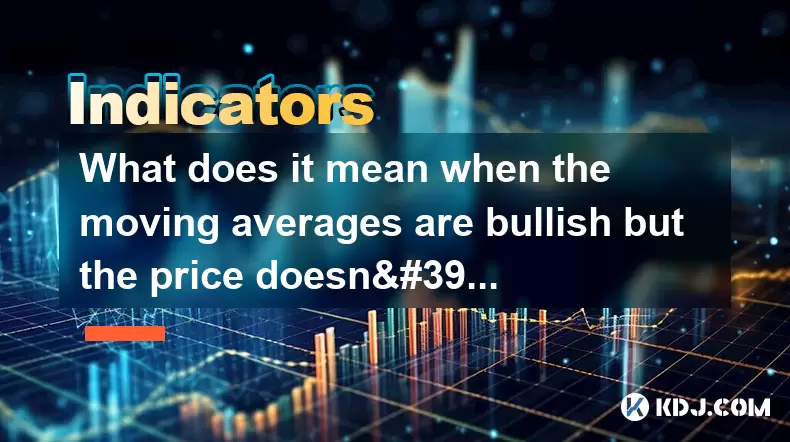-
 Bitcoin
Bitcoin $114800
-0.87% -
 Ethereum
Ethereum $4776
1.26% -
 XRP
XRP $3.035
-0.59% -
 Tether USDt
Tether USDt $0.9997
0.01% -
 BNB
BNB $868.3
-2.21% -
 Solana
Solana $207.8
2.24% -
 USDC
USDC $0.9999
0.00% -
 Dogecoin
Dogecoin $0.2321
-2.70% -
 TRON
TRON $0.3658
1.42% -
 Cardano
Cardano $0.9042
-1.85% -
 Chainlink
Chainlink $25.67
-0.24% -
 Hyperliquid
Hyperliquid $43.96
1.17% -
 Sui
Sui $3.679
-2.11% -
 Stellar
Stellar $0.4091
-1.83% -
 Ethena USDe
Ethena USDe $1.000
-0.01% -
 Bitcoin Cash
Bitcoin Cash $593.4
0.58% -
 Avalanche
Avalanche $25.53
0.89% -
 Hedera
Hedera $0.2476
-1.21% -
 Litecoin
Litecoin $119.7
-1.84% -
 UNUS SED LEO
UNUS SED LEO $9.609
0.34% -
 Toncoin
Toncoin $3.352
-0.91% -
 Shiba Inu
Shiba Inu $0.00001292
-2.45% -
 Uniswap
Uniswap $11.08
-1.13% -
 Polkadot
Polkadot $4.100
-1.09% -
 Cronos
Cronos $0.1609
4.53% -
 Dai
Dai $0.9999
0.00% -
 Bitget Token
Bitget Token $4.706
-0.88% -
 Aave
Aave $350.1
2.03% -
 Monero
Monero $268.0
0.06% -
 Ethena
Ethena $0.7069
-4.77%
What does it mean when the moving averages are bullish but the price doesn't rise?
A bullish moving average crossover, like the golden cross, signals potential upward momentum, but price may stall due to low volume, resistance, or negative sentiment—confirmation via volume, RSI, and price action is key.
Aug 13, 2025 at 11:35 am

Understanding Bullish Moving Averages
When traders refer to bullish moving averages, they typically mean that shorter-term moving averages have crossed above longer-term ones. This is commonly observed in setups like the 50-day moving average crossing above the 200-day moving average, known as the "golden cross." Such a signal suggests that momentum is shifting in favor of buyers. The interpretation is that recent price action is stronger than past averages, indicating potential upward movement. However, a bullish moving average configuration does not guarantee immediate price appreciation. The market may remain range-bound or even dip temporarily despite the technical signal.
Why Price Might Not Rise Despite Bullish Signals
One key reason the price fails to rise after a bullish moving average crossover is market divergence. While the moving averages reflect smoothed price data, they lag behind real-time action. A crossover may occur after a strong rally, meaning the bullish signal arrives when the momentum has already been exhausted. In such cases, the price may consolidate or retrace as traders take profits. Another factor is low trading volume. Even with favorable technical indicators, sustained upward movement requires participation. If volume remains weak, the lack of buying pressure prevents price escalation.
External market conditions also play a role. For instance, macroeconomic news, regulatory announcements, or broader market sentiment in the cryptocurrency space can override technical patterns. A bullish moving average setup on a Bitcoin chart may coincide with negative sentiment around regulatory crackdowns, causing investors to hesitate. In such environments, technical signals lose effectiveness as fear dominates decision-making.
Examining the Role of Market Structure
Market structure can explain why price stagnates despite bullish indicators. If the asset is trading within a well-defined resistance zone, the moving average crossover may not be strong enough to break through. Resistance levels often represent areas where sellers have historically stepped in. Even with positive momentum, overcoming these zones requires significant buying volume. Traders should examine order book depth and recent price rejection patterns at key levels.
Another structural factor is the presence of large liquidation clusters. In cryptocurrency markets, exchanges display liquidation heatmaps that show where stop-loss orders are concentrated. If a bullish moving average forms near a zone with heavy short liquidations, the price might hesitate as the market absorbs these orders. This creates a temporary equilibrium, delaying breakout attempts.
How to Confirm the Validity of the Signal
To assess whether a bullish moving average signal is likely to result in price movement, traders should incorporate additional confirmation tools. One effective method is analyzing volume profile and on-balance volume (OBV). Rising OBV alongside bullish moving averages suggests accumulation is occurring. Conversely, flat or declining OBV indicates weak participation.
Another confirmation technique involves using oscillators like the Relative Strength Index (RSI) or MACD. If RSI is in oversold territory and begins to rise, it supports the idea of building bullish momentum. The MACD histogram turning positive after a bullish moving average crossover adds further validation. Traders should also monitor price action patterns, such as higher lows and bullish candlestick formations like hammer or engulfing patterns, near support levels.
For a practical confirmation setup:
- Check if the 50 EMA is above the 200 EMA and the gap is widening
- Verify that volume has increased over the past 5–7 candles
- Look for RSI above 50 and trending upward
- Confirm that price is holding above a key support level
Common Misinterpretations of Moving Averages
A frequent mistake is treating moving averages as standalone predictors. The "bullish" label does not imply inevitability. Moving averages are derived from past prices and cannot anticipate sudden shifts in sentiment. Some traders assume that once a golden cross occurs, the price must rise, but this ignores the dynamic nature of crypto markets.
Another misinterpretation involves timeframe mismatch. A bullish crossover on a daily chart may conflict with a bearish setup on the 4-hour chart. Traders focusing only on higher timeframes might miss short-term downtrends that suppress upward movement. It is essential to analyze multiple timeframes to understand the broader context.
Moreover, different types of moving averages (simple, exponential, weighted) react differently to price changes. An EMA gives more weight to recent prices, making it more responsive. A crossover on an EMA chart may appear earlier than on an SMA chart, leading to premature entries if not cross-verified.
Strategies to Navigate This Scenario
When moving averages are bullish but price remains flat, traders can adopt a wait-and-see approach with defined triggers. Instead of entering immediately, set conditional orders that activate only when price confirms the trend. For example:
- Place a buy stop order slightly above a recent swing high
- Use a trailing stop to enter if volume surges
- Wait for a daily close above resistance before acting
Another strategy involves scaling in gradually. Allocate a small portion of capital when the moving average crossover occurs, then add to the position only if price breaks key levels with strong volume. This reduces risk while maintaining exposure.
Monitoring on-chain metrics can also provide insight. For instance, rising exchange outflows combined with increasing wallet activity may signal accumulation, supporting the bullish moving average. Tools like Glassnode or CryptoQuant offer data on supply distribution and holder behavior, which can complement technical analysis.
FAQs
Why do moving averages stay bullish even when price is flat?
Moving averages reflect historical averages, not real-time momentum. If the recent price is consistently above the long-term average, the indicator remains bullish even during consolidation. The mathematical calculation of the average smooths out short-term stagnation, preserving the upward bias.Can a bullish moving average signal fail completely?
Yes. A crossover can be followed by a false breakout or reversal, especially in low-volume conditions. This is more common in altcoins with thin markets. The signal fails when price fails to follow through with sustained buying pressure.Should I sell if price doesn’t rise after a golden cross?
Not necessarily. A lack of immediate movement doesn’t invalidate the signal. Evaluate support levels, volume, and broader market trends. Exiting solely based on price stagnation may cause missed opportunities if the breakout occurs later.How long should I wait for price to react to a bullish moving average?
There’s no fixed timeline. Some breakouts occur within days, others take weeks. Monitor for confirmation signals like volume spikes or candlestick patterns. Patience with defined entry rules is more effective than arbitrary time-based exits.
Disclaimer:info@kdj.com
The information provided is not trading advice. kdj.com does not assume any responsibility for any investments made based on the information provided in this article. Cryptocurrencies are highly volatile and it is highly recommended that you invest with caution after thorough research!
If you believe that the content used on this website infringes your copyright, please contact us immediately (info@kdj.com) and we will delete it promptly.
- Viral Memes, RWA Platforms, and DePIN Crushers: What's Hot in Crypto?
- 2025-08-24 14:45:20
- Meta's Hypernova Glasses: AR's Next Big Thing?
- 2025-08-24 15:05:15
- Down Under Showdown: Australia vs. South Africa in ODI Cricket
- 2025-08-24 15:10:14
- XYZVerse, Shiba Inu, and the 2025 Bull Cycle: A Meme Coin Evolution
- 2025-08-24 13:05:12
- WLFI Token, BingX, and the Trading Landscape: A New York Perspective
- 2025-08-24 12:45:20
- Aave, Governance, Allocation: Navigating DeFi's Shifting Sands
- 2025-08-24 12:45:20
Related knowledge

What does it mean when the +DI and -DI cross frequently in the DMI indicator but the ADX is flattening?
Aug 11,2025 at 03:15am
Understanding the DMI Indicator ComponentsThe Directional Movement Index (DMI) is a technical analysis tool composed of three lines: the +DI (Positive...

What does the sudden appearance of a "dark cloud cover" candlestick pattern during an uptrend indicate?
Aug 13,2025 at 11:35am
Understanding the 'Dark Cloud Cover' Candlestick PatternThe dark cloud cover is a bearish reversal pattern in technical analysis that typically appear...

What does it mean when the moving average, MACD, and RSI all send buy signals simultaneously?
Aug 11,2025 at 01:42pm
Understanding the Convergence of Technical IndicatorsWhen the moving average, MACD, and RSI all generate buy signals at the same time, traders interpr...

What does it mean when both the KDJ indicator and the RSI show overbought signals simultaneously?
Aug 13,2025 at 11:35am
Understanding the KDJ Indicator in Cryptocurrency TradingThe KDJ indicator is a momentum oscillator derived from the Stochastic Oscillator, widely use...

What does it mean when the price is trading above the SAR indicator but the red dots are densely packed?
Aug 09,2025 at 11:49pm
Understanding the SAR Indicator and Its Visual SignalsThe SAR (Parabolic Stop and Reverse) indicator is a technical analysis tool used primarily to de...

What does it mean when the candlestick chart forms a "Morning Star" but trading volume is sluggish?
Aug 12,2025 at 06:28pm
Understanding the Morning Star Candlestick PatternThe Morning Star is a three-candle bullish reversal pattern commonly observed in cryptocurrency pric...

What does it mean when the +DI and -DI cross frequently in the DMI indicator but the ADX is flattening?
Aug 11,2025 at 03:15am
Understanding the DMI Indicator ComponentsThe Directional Movement Index (DMI) is a technical analysis tool composed of three lines: the +DI (Positive...

What does the sudden appearance of a "dark cloud cover" candlestick pattern during an uptrend indicate?
Aug 13,2025 at 11:35am
Understanding the 'Dark Cloud Cover' Candlestick PatternThe dark cloud cover is a bearish reversal pattern in technical analysis that typically appear...

What does it mean when the moving average, MACD, and RSI all send buy signals simultaneously?
Aug 11,2025 at 01:42pm
Understanding the Convergence of Technical IndicatorsWhen the moving average, MACD, and RSI all generate buy signals at the same time, traders interpr...

What does it mean when both the KDJ indicator and the RSI show overbought signals simultaneously?
Aug 13,2025 at 11:35am
Understanding the KDJ Indicator in Cryptocurrency TradingThe KDJ indicator is a momentum oscillator derived from the Stochastic Oscillator, widely use...

What does it mean when the price is trading above the SAR indicator but the red dots are densely packed?
Aug 09,2025 at 11:49pm
Understanding the SAR Indicator and Its Visual SignalsThe SAR (Parabolic Stop and Reverse) indicator is a technical analysis tool used primarily to de...

What does it mean when the candlestick chart forms a "Morning Star" but trading volume is sluggish?
Aug 12,2025 at 06:28pm
Understanding the Morning Star Candlestick PatternThe Morning Star is a three-candle bullish reversal pattern commonly observed in cryptocurrency pric...
See all articles

























































































